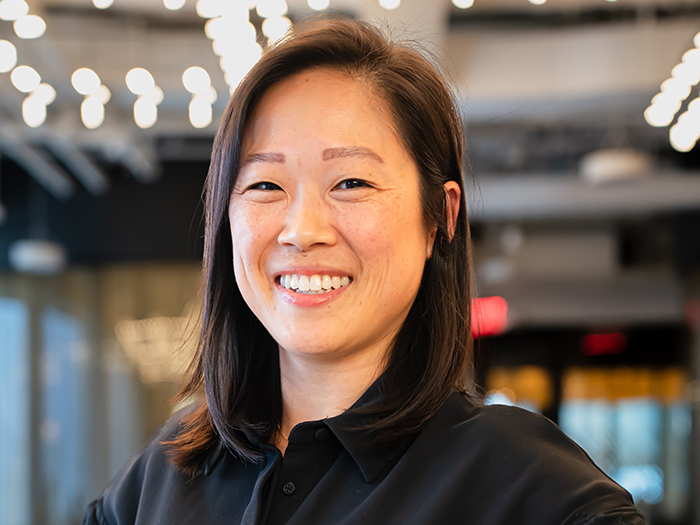Improved Benefits Is Just One Way Workers’ Comp Can Bridge Its Horrendous Talent Gap

When I graduated college last May, I didn’t think that my first post-college job would be writing about workers’ compensation. I didn’t even know what workers’ compensation was.
After I received the job offer and began telling people that I was covering workers’ comp, I was met with many confused stares. Save for the odd person whose parent had filed a claim, many in my generation didn’t know what workers’ compensation was. Eventually, I just started saying that I wrote about insurance.
The lack of knowledge about the workers’ compensation industry among young people is a major problem for the industry, which is facing a historic talent gap. As older workers retire, young people aren’t stepping up to fill those roles.
“Most individuals who have little work experience probably don’t even really know what workers’ comp is,” said Erin Simonson, director of human resources for Genex Services.
“For us at Genex, a high percentage of our workforce falls in the baby boomer generation. They average about 10 years of service. Our lowest percentage is millennials, and they average about three years of service.”
The dearth of younger workers in the industry is causing many workers’ comp professionals to take a different approach to recruitment retention and even employee benefits as they try to bring millennials and generation Z workers into the fold.
The Looming Workers’ Comp Talent Shortage
A variety of demographic factors are converging to create a talent gap in the workers’ compensation industry and in the insurance profession more broadly.
One of those factors is the aging workforce. Boomers have stubbornly clung to their jobs, staying in many positions or with the same company for 30 years or more.

Denise Algire, national medical director, Albertsons Companies
They’re holding on to these positions well past retirement. Nearly 20% of Americans aged 65 or older are either working past retirement or actively seeking employment and the number of retirement aged Americans in the workforce has doubled since 1985, according to data from the Bureau of Labor Statistics, the CDC and the U.S. census.
When they leave these positions, they’re creating a wealth of openings in an economy with a low unemployment rate.
The 2019 Workers’ Compensation Benchmarking Survey from Rising Medical notes that the insurance industry as a whole will need to fill 400,000 positions in 2020 — a task that would be difficult in any job market.
But when you factor in a nationwide average unemployment rate of 3.6% for all types of positions and 1.5% for property/casualty positions, the current talent shortage could become an outright crisis for the workers’ compensation industry.
“The labor market as a whole is pretty tight. It’s very competitive right now. But if we look at the labor market within just the insurance industry, it’s even more competitive,” said Denise Algire, director of risk initiatives & national medical director, Albertsons Companies.
Algire is also the lead author and principal researcher of the 2019 Workers’ Compensation Benchmarking Study.
Appealing to Younger Generations
In order to address the talent gap, employers of workers’ compensation professionals are going to have to think critically about how they recruit people into the industry.
“Organizations are going to have to think differently than how they’ve traditionally hired and retained staff,” Algire said.
One of the areas in need of a refresh is the industry’s reputation. Traditionally thought of as a “boring” career path, workers’ comp needs to shed that reputation and emphasize how many opportunities it has for people just starting their careers.
“Workers’ comp touches so many facets in addition to insurance — there’s medical care, rehabilitation, technology, finance, the legal aspect, regulations, analytics,” Simonson said.
One way the industry can rebrand itself and appeal to millennial and generation Z workers is by emphasizing the growth of worker advocacy culture within the industry.
“Very clearly younger workers are looking for work life balance. They want to enjoy both, but especially enjoy life and friends and family and whatnot. They want to enjoy work as well, but they want to have a strong balance between those two areas.” — Thomas L. Wiese, vice president of claims, the MEMIC Group
Study after study shows millennials want jobs where they feel like they have a purpose and are making a difference in the world. Emphasizing the industry’s effects on the lives of injured workers is one way to attract a younger workforce.
“When I started here, I, too, shared the perspective that it was a ‘non-glamorous industry.’ As I interacted with our workforce, and I heard the passion in their stories and really understood what was behind what we did, I came to realize that the work we do is so impactful to the recipients of our care,” Simonson said.
“To be able to restore an injured worker to a level where they can work again and provide for themselves and their families is really just so valuable.”
The industry also needs to prepare itself for a new, tech-savvy workforce. “Our practices, our processes, how we do things and the tools we have available to do things aren’t up to speed with today’s technology and the way younger workers think, act and work,” said Thomas L. Wiese, vice president of claims at the MEMIC Group. Wiese is a member of the 2019 Workers’ Compensation Benchmarking Study’s advisory council.
He went on to suggest that the use of apps in other lines, such as personal auto and group health, could provide a template for where workers’ comp needs to go in terms of introducing technology.
Focus on Retainment
Recruiting younger employees is only half the battle, however.

Erin Simonson, director of human resources, Genex Services
Once a company has recruited younger workers into their workforce, they need to focus on retaining those employees, especially since millennial and gen-Z workers tend to bounce around in their careers more than older generations.
“Retention and selection is certainly a challenge that we need to be prepared for. We always need to be prepared for turnover,” Simonson said. “Younger generations tend to move around a lot in their jobs.”
Part of the reason young people seem to be bouncing out of workers’ compensation positions is the fact that they don’t feel that they have enough training. According to the 2019 Workers’ Comp Benchmarking Report, 25% of front-line claims professionals reported their company did not have a training program for new hires, and another 20% said they did not know if such a program existed at their organization.
Training programs and educational opportunities are especially important for younger generations who are eager to continue learning throughout their careers.
“Our younger workers, I think, have a thirst for knowledge,” Simonson said. “I would hope that the curious millennials would see this as an opportunity to continue this evolution and see it as another opportunity to be part of something much bigger than perhaps their current entry- to mid-level jobs.”
At Genex, they have worked to create training programs that prepare new employees for skills they need both for their first day on the job and for their longer careers. It has built a library of short training videos that workers can access whenever they have questions on a particular topic, and the company provides some tuition reimbursement so that employees can further their education.
Additionally, they’ve created a mentoring program where younger workers can learn from those who have been in the industry for decades. “I personally love the idea of partnering employees from different generations in a buddy or mentoring program. I think they can learn so much from each other,” Simonson said.
Offering employees competitive benefits that go beyond financial rewards is another way for companies to retain young employees.
“I think there’s a perception in the industry that people are driven only by financial rewards,” Algire said. “We thought it was important to find out from front-line claims professionals what they really value.”
The 2019 Workers’ Comp Benchmarking Survey found that benefits, such as the ability to work from home or a shortened work week, were important to front-line claims professionals. Working from home was ranked as the most important benefit to claims professionals and a four-day work week was third.
“Very clearly, younger workers are looking for work-life balance. They want to enjoy both but especially enjoy life and friends and family and whatnot. They want to enjoy work as well, but they want to have a strong balance between those two areas,” Wiese said.
“They want flexibility in where they work, how they work, when they work, and what’s expected from them at work.”
In order to attract younger workers’ the workers’ compensation industry will need to remain competitive, benefits wise, with other areas of property/casualty insurance that have already started offering workers more flexible options.
“Other areas of the P&C insurance industry have embraced telecommuting and work-from-home options for claims professionals. Workers’ comp has been slower to adopt that,” Algire said.
Despite the industry’s languid approach to adopting change, Algire says that the need to begin approaching recruitment and retainment of young workers is paramount. “In terms of how we recruit and retain, we have to do things differently,” she said. &










